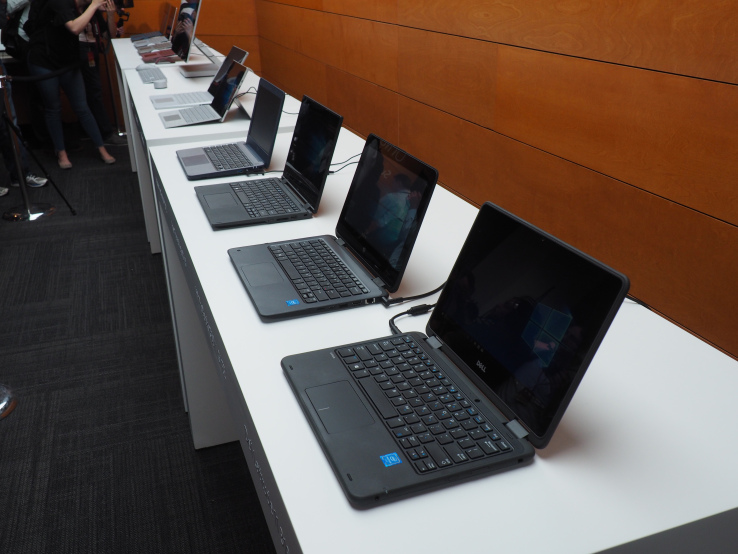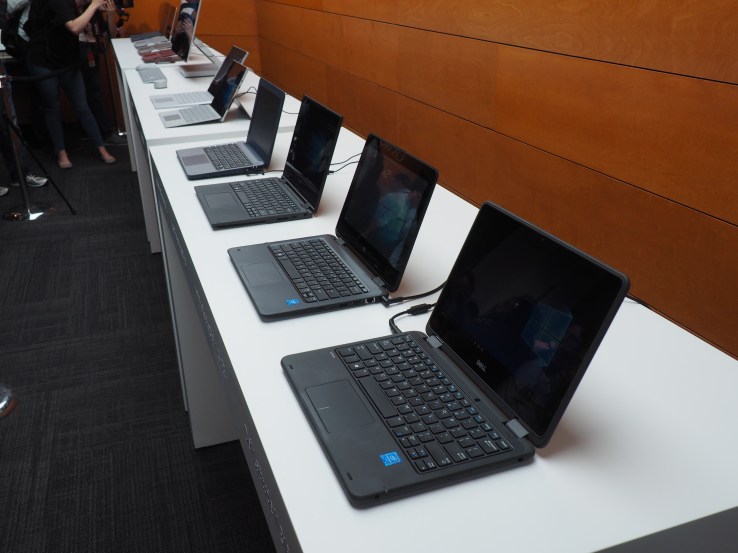

At first glance, Windows 10 S makes perfect sense. It’s a lightweight, stripped-down version of Microsoft’s operating system designed to avoid taxing low-cost hardware. That makes it a good fit for schools, with laptops running the software priced as low as $189. But the most remarkable thing about the operating system in its current form may be its reliance on the Windows Store.
In Microsoft’s sales pitch, limiting the ways in which users can download content is actually a net positive. The experience is simpler and potentially safer, as limiting the system to approved apps lessens the potential for malware on the system — always a big concern when purchasing a Windows device. And it has echoes of Apple’s own default security settings on MacOS.
But is it a net positive for users? Certainly it’s easy to see how such a strict structure is beneficial in a classroom setting. Letting students download things at will is most likely a recipe for chaos, malware and, well, all sorts of things you’d rather not introduce into a classroom setting. It’s part of what made the Chromebook’s closed-off browser-based operating system a hit in the classroom, along with fast logins, which are a key part of this new version.
But what of a wider audience? Everything announced today was done so within the broader context of Microsoft’s education vision. But all of those third-party hardware manufacturers are no doubt hoping the category finds appeal outside of the classroom as the Chromebook has in its own tepid way.
And certainly there’s something to be said for systems starting at $189. It’s a bit like the second coming of the netbook. Though this time out, the systems feature full-sized keyboards and in some cases swiveling touch displays and pens. Perhaps, like netbooks, they’ll find a second life and secondary systems for frequent travelers.
Windows 10 S’s reliance on Microsoft’s app store certainly feels like a hindrance outside of the classroom, with the possibility of a few exceptions. For instance, an MS rep at today’s event suggested to me that he might purchase one for an elderly parent with little in the way of tech knowledge. Limiting access to approved Microsoft apps could lessen his need to perform regular maintenance on the machine.
But like the Mac app store before it, it also means cutting off access to some very mainstream applications. As has been pointed out, key players like iTunes and Chrome aren’t available (while Spotify is apparently “coming soon”), and who knows if they’ll ever be? Of course, if 10 S takes off in any sort of meaningful way, there will be a lot more incentive for companies to develop for the platform — an engagement that’s long been an issue for the company.
I understand why Windows 10 S is the default on these low-end systems. They were built specifically with the lightweight, streamlined version of the operating system in mind. Not exactly for the heavy multitasker, but it will get simple jobs done. Why the Surface laptop is launching with the operating system, on the other hand, is beyond me.
It’s clearly capable of running the full version of Windows, and given its $999 base price point, it wasn’t designed with a one laptop per child model in mind. If it truly is an educational play, it’s aimed at high school — and even more likely college — students. And they likely won’t take as well to a system that restricts that in that way.
Of course, Windows 10 S can be updated to Windows 10 Pro. If you’re a school or you opt to upgrade before year’s end, you can do so for free. After that, it’s a $49 fee, which is not insignificant if the low price point is what drove you to one of these systems in the first place.
My guess is that Microsoft takes a wait and see approach. If there’s demand for it, the company will probably offer a version of the Surface laptop running a full version of Windows by default (which may or may not have that $49 fee baked into the price) and could eventually loosen restrictions on the 10 S app ecosystem. Hey, Google eventually bit the bullet and opened up Google Play access to its Chromebooks.
If Microsoft’s looking for true appeal outside the classroom, it’s going to have to loosen up those restrictions.

